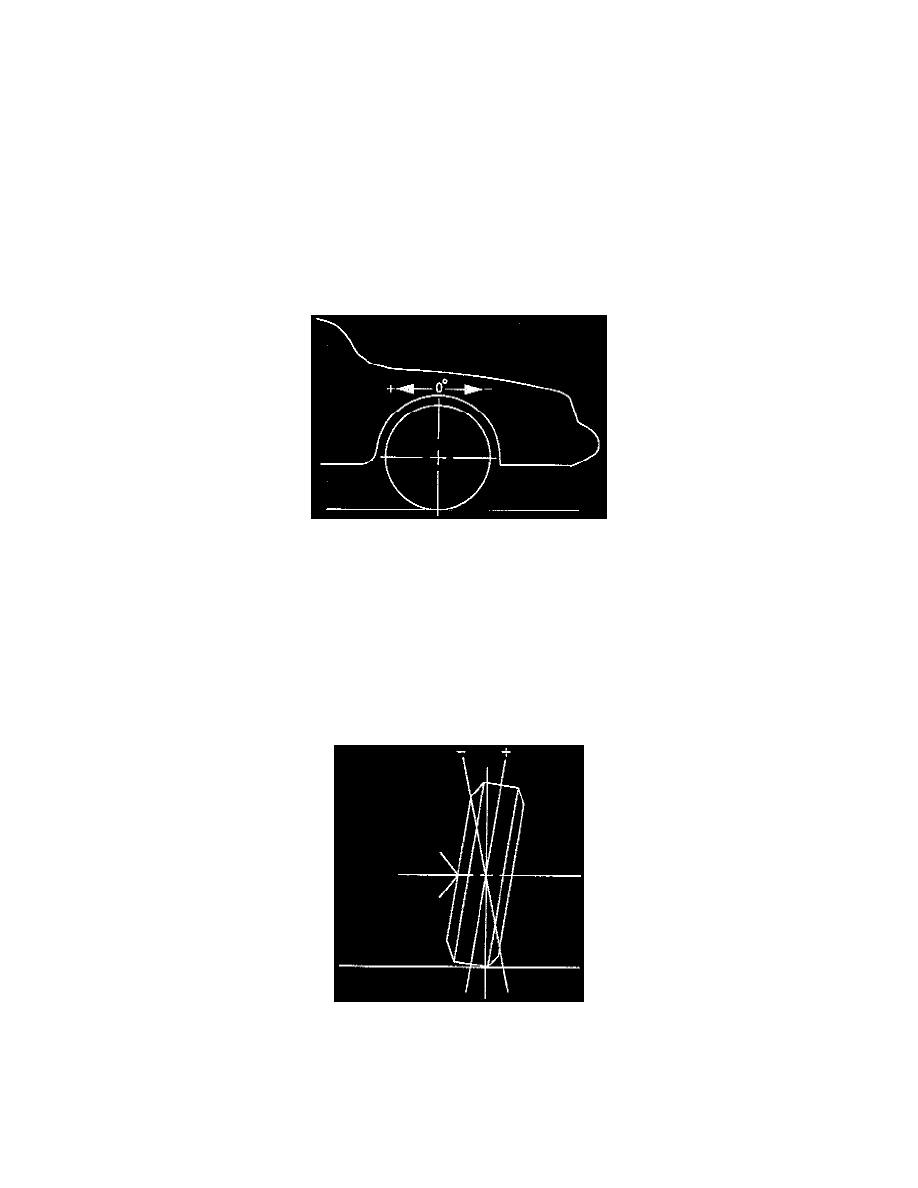Prizm L4-108 1.8L DOHC VIN 8 MFI (1998)

Alignment: Description and Operation
General Description
The wheel alignment refers to the angular relationship between the wheels, the suspension attaching parts, and the ground. To achieve the desired
handling characteristics of a vehicle under various operating conditions, modern steering geometry relates to both the front and the rear suspension
systems. It must also be realized, that the various measurable angles that can be checked while the vehicle is stationary is not a real indication of the
changes that occur in a dynamic situation.
Even though some of the following descriptions may not be adjustable, each is an inherent part of the vehicle's suspension tuning.
Perform a complete wheel alignment check when a service check is necessary. This check includes the measurement of all four wheels. When the vehicle
is geometrically aligned, fuel economy, tire life, and steering performance are increased.
Caster Description
Caster is the tilting of the uppermost point of the steering axis either forward or backward (when viewed from the side of the vehicle). A backward tilt is
positive (+) and a forward tilt is negative (-). Caster influences directional control of the steering but does not affect the tire wear and is not adjustable on
this vehicle. Caster is affected by the vehicle height, therefore it is important to keep the body at its designed height. Overloading the vehicle or a weak
or sagging rear spring will affect caster. When the rear of the vehicle is lower than its designated trim height, the front suspension moves to a more
positive caster. If the rear of the vehicle is higher than its designated trim height, the front suspension moves to a less positive caster.
If there is too little positive caster, steering may be touchy at high speed and wheel returnability may be diminished when coming out of a turn. If one
wheel has more positive caster than the other, it will cause that wheel to pull toward the center of the vehicle. This condition will cause the vehicle to pull
or lead to the side with the least amount of positive caster.
Camber Description
Camber is the tilting of the wheels from the vertical when viewed from the front of the vehicle. When the wheels tilt outward at the top, the camber is
positive (+). When the wheel tilts inward at the top, the camber is negative (-). The amount of tilt is measured in degrees from the vertical. Camber
settings influence the directional control and the tire wear.
Too much positive camber will result in premature wear on the outside of the tire and cause excessive wear on the suspension parts.
Too much negative camber will result in premature wear on the inside of the tire and cause excessive wear on the suspension parts.
